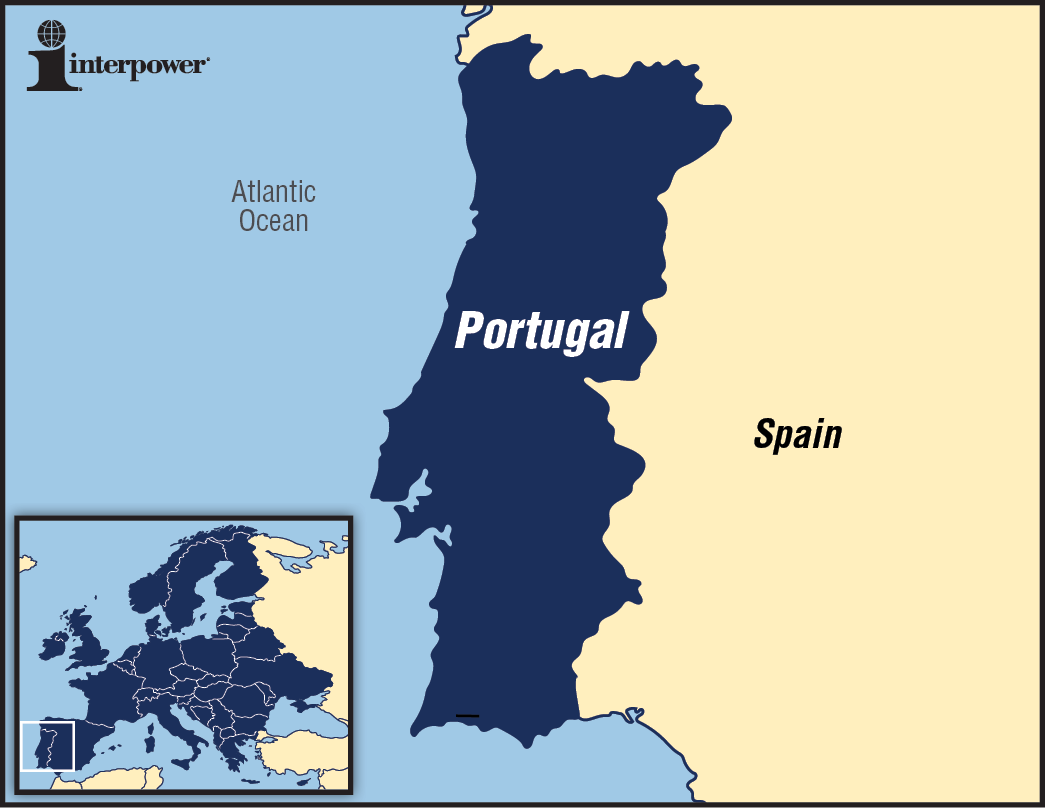Exporting to Portugal

| PORTUGAL | |
|---|---|
| Actual population* | Population world ranking |
| 10,813,834 | 80 |
| Actual GDP (PPP)* | GDP world ranking |
| $243.3 billion | 54 |
| Actual GDP (per capita)* | GDP (per capita) world ranking |
| $22,900 | 64 |
*See the end of this blog for definitions
As a part of the European Union, Portugal offers global trade opportunities within the country and the EU, as well as serving as a potential entry point to other Portuguese speaking markets, also known as the Lusophone markets.
Portugal has a long history of being involved in international trade. Market entry strategies may include working with a local distributor or partner, forming a joint venture, or exporting directly. Establishing the proper business network is strongly recommended. In setting up any kind of agreement, companies need to make sure they are in accordance with EU and member state laws.
Knowledge of business customs will help to enhance a company’s success. Take the time to establish solid business relationships as personal contacts are essential. Realize that the business community can be considered formal. It’s important to use appropriate titles and learn the proper way to greet others. The focus is on courtesy, punctuality, and thoroughness.
To assist in learning more about market entry strategies, doing business in Portugal, business customs, and import/export requirements, there are a variety of resources to consult. Among them are the United States Commercial Service and the United Kingdom Trade and Investment.
Located in Southern Europe, Portugal joined the European Union in 1986. The EU is a Customs Union which consists of member countries who have formed a single region for customs purposes. Goods that have been imported legally can circulate throughout the EU with no further customs checks. To learn more about the customs regulations, among the sources to consult are the European Commission Export Helpdesk and European Commission Taxation and Customs Union. Conducting due diligence in accordance with all of the regulations is essential.
Some products may require safety testing and certification for this market. While not all products are required to have a CE mark, others do require one. When affixing the CE mark to a product, a manufacturer affirms that the product meets the necessary requirements and can be sold throughout the EU.
There are also EU regulations that need to be followed, so it’s important to know what is required in Portugal. Among them are:
- REACH is the European regulation for Registration, Evaluation, Authorization, and Restriction of Chemicals. The European Commission works closely with ECHA (European Chemicals Agency) in the implementation of this regulation.
- RoHS stands for Restriction of Hazardous Substances. It restricts the use of certain hazardous materials found in electrical and electronic products.
- WEEE stands for Waste from Electrical and Electronic Equipment. WEEE requires the treatment, recovery, and recycling of electric and electronic equipment.
Portuguese is spoken in Portugal, but many also speak several additional languages with English being one of them. English is generally accepted within the business community.
In Portugal, the voltage used is 230V at 50Hz. The most frequently specified plug pattern is the Continental European plug.
Sources:
www.export.gov/portugal
www.gov.uk
Sources for European Union:
www.ec.europa.eu
www.echa.europa.eu
www.rohsguide.com
www.exporthelp.europa.eu
www.europa.eu
www.export.gov/europeanunion
*Source: www.cia.gov/library/publications/the-world-factbook/index.html
Country comparison—Population: Population compares estimates from the US Bureau of Census based on statistics from population censuses, vital statistics, registration systems, or sample surveys pertaining to the recent past and on assumptions about future trends. (July 2014 est.)
Country comparison—GDP (Purchasing Power Parity): GDP (purchasing power parity [PPP]) compares the gross domestic product (GDP) or value of all final goods and services produced within a nation in a given year. A nation’s GDP at PPP exchange rates is the sum value of all goods and services produced in the country valued at prices prevailing in the United States. (2013 est.)
Country comparison—GDP – per capita (PPP): GDP – per capita (PPP) compares GDP on a purchasing parity basis divided by population as of 1 July for the same year. (2013 est.)






